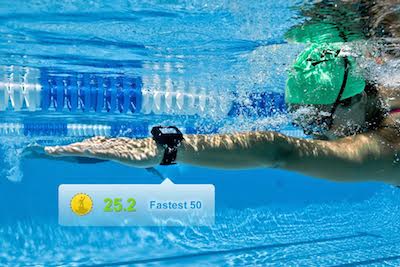 Swim.com
Swim.com
The smart fitness and sport wearable device market is expected to grow at a CAGR of 25.4 percent globally and the smart fitness and health services market is expected to grow at a CAGR of 29.9 percent from 2014 to 2019, according to a report from TechNavio.
Since wearable devices can monitor speed, distance, breathing rate, and heart rates for athletes, TechNavio said, it helps athletes with "critical decision-making processes in various sports".
While the rise of tracking in professional sports has been well-documented, amateur athletes are also increasingly able to more easily track their game, too. Last year, quite a few companies launched consumer products that target specific sports.
In July, ecommerce website, SwimOutlet.com, launched a public beta for its swim tracking platform. The website, called Swim.com, helps swimmers track, share, and compare the workouts they monitor with waterproof activity trackers.
A few months prior, Smash Wearables launched a crowdfunding campaign on Kickstarter for a wristband that tracks the user’s tennis technique. The device sends data to a companion app that tells users about their stroke consistency score for each game. Smash tracks the user’s forehand, backhand, volley, first serve, and second serve.
And in 2013, Infomotion Sports Technologies launched its first product, the 94Fifty Smart Sensor Basketball that keeps track of what happens to the ball when it’s in play and sends this data via Bluetooth to a connected app. Some factors it measures include shooting mechanics, shot release speed, shooting arc, power dribbling, and hand speed. This data is meant to help basketball players improve their game.
In December 2014, TechNavio predicted that the global location-based services market for the healthcare industry will grow about 31 percent over the next four years. The firm noted that real-time performance monitoring has become more popular in healthcare to increase hospital efficiency. Doctors, staff, and patients are using all kinds of wearable devices: pedometers, smart watches, and health monitors.

















